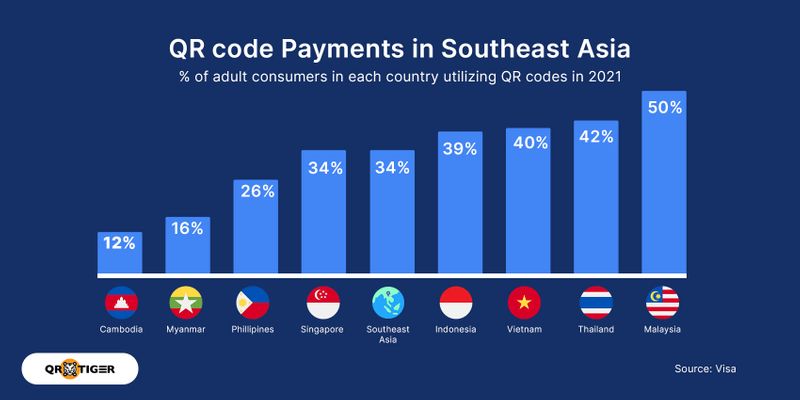
Asia, a region known for its economic diversity, ranging from wealthy nations like Singapore, Japan, and South Korea to emerging powerhouses like China and India, has demonstrated notable unity in embracing financial inclusion.
A significant aspect of this trend is the widespread adoption of financial technologies, particularly QR codes, which enable customers to make payments using their smartphones by simply scanning a QR code.
QR codes, short for Quick Response codes, are two-dimensional barcodes that store information and can be scanned using a smartphone camera. This technology lets customers make payments by scanning the QR code, which then processes the transaction through a connected digital payment system.
Evolution and growth of QR payments in Asia
QR codes, initially developed in 1994 by Toyota subsidiary Denso Wave, have evolved from tools for product information and advertising to essential components of digital payment systems. The rapid advancement of mobile technology, combined with global digitalisation efforts and the impact of the Covid-19 pandemic, has cemented the codes as a ubiquitous element of daily life.
A pivotal moment for QR payments in Asia came in 2011 when Alipay, Alibaba’s financial arm, introduced a code-scanning payment product in China. This innovation was followed by WeChat’s similar launch in 2014.
These developments significantly boosted the popularity of QR code payments in China, where by the end of 2022, over 95 per cent of mobile phone users relied on QR codes as their primary payment method, and more than 50 per cent used them for public transportation fares.
The success of QR payments in China can be attributed to the country’s limited use of credit cards at the time, making QR codes a simple and inclusive solution for the masses. Unlike the West, where credit cards dominate, China’s QR code system facilitated peer-to-peer transactions, positioning the country as a global leader in QR payments.
Expanding QR payments across Asia
The influence of QR payments extends beyond China to much of Southeast Asia, where countries like the Philippines, Singapore, Thailand, Malaysia, Indonesia and Cambodia have established cross-border payment links. This connectivity allows payment systems in one country to integrate seamlessly with those in another, fostering financial inclusion and economic collaboration.
Image Source: QR Tiger and Source VISA
A study by Boston Consulting Group in 2023 highlighted that smartphone usage in Southeast Asia reached 675 million in 2022, covering 82 per cent of the region’s population. This widespread adoption of mobile technology has been a key driver in the popularity of QR payments.
India, too, has embraced QR payments through the Unified Payments Interface (UPI), which connects hundreds of banks and other financial players. The demonetisation initiative in 2016, aimed at curbing black money, further accelerated the adoption of digital payments and QR codes in the country.
Japan has also developed a standardised QR code payment system called JPQR, streamlining the user experience by unifying various QR code payment services.
Challenges and future outlook
Despite their success, QR payments are not without challenges. Issues such as financial literacy among merchants and customers’ dishonesty in transactions have posed obstacles. For example, some hawker food vendors in Singapore initially adopted digital payments, including QR codes, but later abandoned them due to these issues. However, as of 2022, about 70 per cent of hawker food vendors have adopted digital payments.
Despite these challenges, the future of QR payments in Asia looks promising. The technology has enabled countries like China and regions across Southeast Asia to enhance financial inclusion and digitalisation.
Partnerships, such as China’s UnionPay collaborating with JPQR for seamless payments for Chinese tourists in Japan, and the Bank of Thailand’s plan for QR code cross-border payments with India, further demonstrate the potential for growth.
QR codes have established themselves as a key component of Asia’s fintech landscape, promoting financial inclusion and setting a precedent for the global fintech ecosystem.
The post Financial Inclusion and the Rise of QR Payments in Asia appeared first on The Fintech Times.
